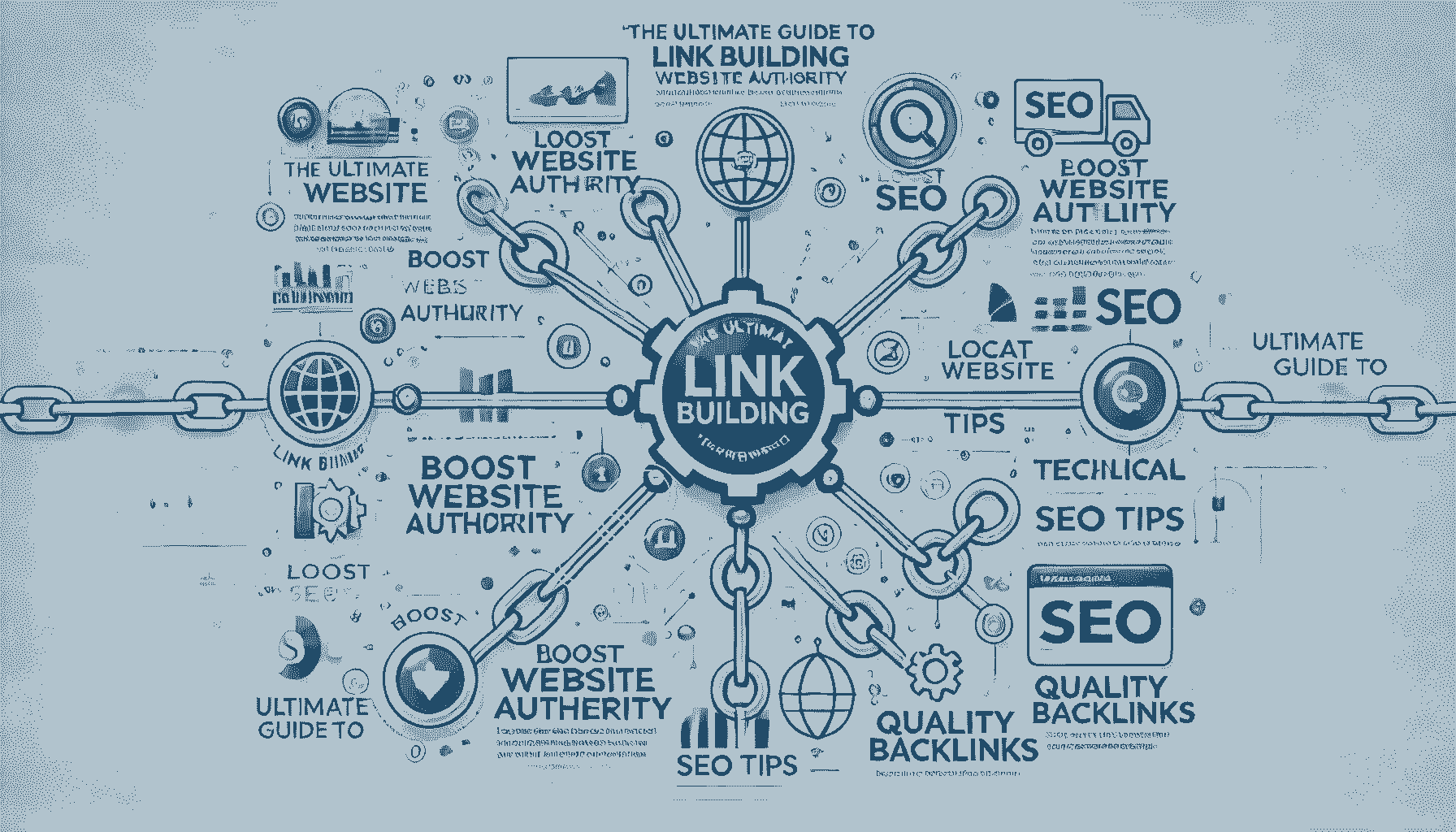Link Building is one of the most essential aspects of SEO that can elevate your website’s authority and search engine rankings. It involves acquiring hyperlinks from other websites to your own, signaling to search engines like Google that your content is valuable and trustworthy. But link building isn’t just about quantity—quality and relevance. In this comprehensive guide, we’ll break down everything you need to know to master link building effectively.
What is Link Building?
Link building refers to acquiring hyperlinks from other websites that direct users to your website. These hyperlinks, also known as backlinks, act as a vote of confidence, showing search engines that your content is credible and worth ranking higher in search results.
Backlinks are a core factor in Google’s ranking algorithm, making link building an integral part of off-page SEO. Whether you run a blog, e-commerce store, or service-based website, strategic link building can greatly impact your online visibility.
Why is Link Building Important?
Here are the key benefits of effective link-building:
- Improves Domain Authority
- High-quality backlinks from reputable websites increase your domain authority, helping you rank higher in search results.
- Drives Referral Traffic
- Backlinks from popular websites can bring in targeted visitors who are genuinely interested in your content, products, or services.
- Builds Credibility
- When trusted websites link to your content, it enhances your brand’s reputation and reliability.
- Supports Long-Term SEO
- While link building requires effort, the benefits are long-lasting. Over time, it provides a steady stream of traffic and better rankings.
Understanding Link Building
Types of Links: Internal, External, and Backlinks
- Internal Links: These connect pages within your website, improving navigation and spreading link equity.
- External Links: Links from your website to other sites. These show credibility and provide value to your readers.
- Backlinks: Links from other websites to your site. These are the gold standard in SEO, signaling authority, and relevance.
DoFollow vs. NoFollow Links
- DoFollow Links: Pass SEO value and authority to your site. Essential for improving rankings.
- NoFollow Links: Do not pass SEO value; drive traffic and diversify your link profile.
Best Practices for Link Building
1. Focus on High-Quality Content
High-quality, informative, and engaging content naturally attracts backlinks. Create blog posts, infographics, and case studies that others will want to share.
2. Outreach to Relevant Websites
Build relationships with websites in your niche. Send personalized outreach emails to propose guest posts or share valuable resources.
3. Utilize Broken Link Building
Identify broken links on relevant websites and suggest your content as a replacement. This mutually beneficial strategy improves user experience and earns you backlinks.
4. Leverage Social Media
Share your content on social platforms to increase its visibility. While social media links aren’t direct ranking factors, they can lead to more backlink opportunities.
5. Participate in Guest Blogging
Write high-quality articles for authoritative websites in your niche, including a link back to your site. Ensure the content provides value and aligns with the host website’s audience.
Types of Link-Building Strategies
- Organic Link Building: Create valuable content that naturally attracts links over time.
- Manual Outreach: Reach out to websites and pitch your content or collaborate for guest posting opportunities.
- Paid-Link Building: While risky, purchasing links from credible sources can be effective ethically.
Proven Link Building Techniques
- Guest Posting: Write high-quality articles for other websites in your niche, including a backlink to your site.
- Broken Link Building: Identify broken links on reputable sites and offer your content as a replacement.
- Content Marketing: Create shareable content that others want to link to, such as infographics, videos, or in-depth guides.
Creating Link-Worthy Content
What Makes Content Link-Worthy?
- Unique insights
- Detailed research
- High visual appeal
Examples of Linkable Assets
- Infographics
- Whitepapers
- Interactive tools
Common Mistakes to Avoid in Link Building
- Buying Links
Purchasing backlinks violates Google’s guidelines and can lead to penalties. Focus on organic methods instead.
- Ignoring Relevance
Backlinks from unrelated niches offer little value. Always prioritize links from websites relevant to your industry.
- Overusing Anchor Text
Avoid stuffing keywords in anchor text. Use natural, diverse anchor text for a more organic link profile.
- Focusing on Quantity Over Quality
A few high-quality backlinks from authoritative sites are far more impactful than numerous low-quality links.
How to Measure Link-Building Success
Link building is a crucial part of SEO, but how do you know if your efforts are working? Here’s a simple guide to measure your success effectively.
Metrics to Track
- Domain Authority (DA):
Check if your site’s authority is improving. Higher DA means more vital credibility and ranking potential.
- Organic Traffic:
Track the growth in traffic from search engines. A steady increase shows that your link-building efforts are paying off.
- Backlink Growth:
Monitor the number of backlinks you’re acquiring. Focus on gaining quality links from high-authority websites.
Tools for Monitoring Backlinks
- Google Search Console:
Free and effective, it helps you see who’s linking to your site and which pages are attracting the most links.
- Majestic SEO:
This tool provides detailed metrics like Trust Flow and Citation Flow to analyze your backlink quality.
- Ubersuggest:
A beginner-friendly option that tracks backlinks, domain scores, and organic traffic in one place.
Tools to Simplify Link Building
Several tools can streamline your link-building efforts:
- Ahrefs: Analyze backlinks and identify link-building opportunities.
- SEMrush: Discover competitors’ backlinks and develop strategies to outperform them.
- BuzzSumo: Find popular content in your niche to inspire shareable content.
- Hunter.io: Simplify outreach by finding the email addresses of website owners.
Build a Strong Backlink Profile in 3 Steps
- Identify Link Opportunities
Start by looking for websites that align with your niche. Use tools like Google Search, Ahrefs, or SEMrush to find link-building opportunities. Focus on:
- Guest blogging sites
- Resource pages
- Broken link-building prospects2. Analyze Competitor Backlinks
Study the backlinks of your competitors to understand their link-building strategies. Analyze their:- High-authority referring domains
- Anchor text distribution
- Content types attracting backlinks3. Monitor Your Backlink Profile
Regularly check your backlinks to ensure quality and relevance. Use tools to:- Remove toxic links
- Track new referring domains
- Maintain a balanced backlink profile
Measuring the Success of Your Link-Building Campaign
Tracking your progress ensures you’re on the right path. Use these metrics to measure success:
- Domain Authority (DA): Check if your DA score has improved.
- Referral Traffic: Monitor the traffic generated by backlinks.
- Keyword Rankings: Evaluate whether your targeted keywords rank higher.
- Number of Backlinks: Track the quantity and quality of acquired links.
Case Studies of Successful Link-Building Campaigns
Example 1: E-commerce Website
- Leveraged influencer partnerships to gain high-quality backlinks.
Example 2: Blogging Niche
- Used guest posting to increase domain authority and organic traffic.
Advanced Link-Building Tactics
Building Relationships with Influencers
Collaborate with influencers in your niche to create mutually beneficial content.
Using HARO (Help a Reporter Out)
Respond to journalist queries to earn high-quality backlinks from media outlets.
Link Building for Local SEO
Importance of Local Citations
Get listed in local directories and online maps to improve local search rankings.
Strategies for Local Businesses
- Partner with local influencers
- Sponsor community events
Future Trends in Link Building
AI and Automation in Link Building
AI tools are streamlining link prospecting and outreach, making campaigns more efficient.
Importance of User Intent
Focusing on user-relevant content is becoming increasingly crucial for sustainable link-building.
Finality
Link building remains a cornerstone of a successful SEO strategy. By earning high-quality backlinks, you improve your website’s rankings and build authority and trust with your audience. To see long-term results, focus on creating valuable content, nurturing relationships with industry leaders, and using ethical link-building practices.







